Each month, our Outreach Team highlights an alumnus of Eliot-Pearson who is excelling in their professional career post-Tufts while continuing to maintain and spread the department’s mission.
This month, Outreach Coordinator Nick Woolf interviewed former Master’s and Ph.D. student Amanda Alzena Sullivan, who recently joined Joulez as their Director of Identity and Educational Research.
She also successfully published a new book, titled: Breaking the STEM Stereotype: Reaching Girls in Early Childhood) that builds on her dissertation to explore the various social, cultural and psychological reasons behind the persistent gender disparity between men and women in STEM fields.
Who: Amanda Alzena Sullivan
Programs Completed at Eliot-Pearson:
- Applied Master’s in Child Study & Human Development (2012)
- Ph.D. in Child Study & Human Development (2016)
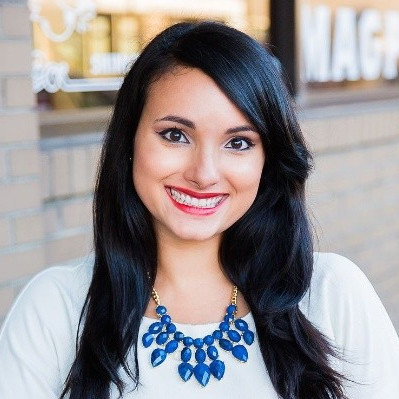
Nick: What skills did you gain and how did you grow (personally and professionally) from your time as a graduate student at Eliot-Pearson?
Amanda: I gained so many personal and professional skills during my time studying at Eliot-Pearson. In terms of research skills, I learned qualitative and quantitative data collection and analysis methods. I got practice giving interviews, developing surveys, administering assessments to children, and even developing my own assessments and protocols. I learned about writing and publishing my work in peer-reviewed journals. I also gained a lot of technical skills working with Prof. Marina Bers in the DevTech Research Group. I learned about coding, website editing, video editing, soldering, and assembling robots — so many valuable technical abilities that I certainly didn’t expect to get in a child development program!
On a personal level, I learned to stay focused and persevere towards long-term goals. From my mentor Prof. Bers I learned to have confidence in myself and my opinions. To speak about my work and ideas with pride and to always value the assets I bring to a team. I entered EP feeling under-qualified and frankly, scared to be there and scared to speak my mind. I think the biggest way Prof. Bers and the EP community supported me personally was to help me gain self-confidence and leadership skills.
Nick: What types of research and/or applied work were you involved with at E-P?
Amanda: I was involved with a variety of projects at the DevTech Research Group, but the biggest project I was involved in was the development of the KIBO Robotics Kit (now commercially available through KinderLab Robotics). We created KIBO to provide young children (ages 4-7) with a hands-on introduction to technology, engineering, and computer science concepts without any screen-time involved. Children build their robots using motors, wheels, sensors, and outputs. They decorate with craft materials, and program their robot’s actions using wooden programming blocks. Throughout my work on KIBO and other technologies at DevTech, my personal research has always looked at gender and robotics and designing tech that would be appealing to girls and possibly boost girls’ interest, confidence, and competence in engineering and computer science – two fields where women are drastically underrepresented.
During my time at EP, I also honed my teaching practice through teaching robotics & coding in many public and private schools in the greater Boston area including the Arthur D. Healey School, the Jewish Community Day School, Rashi, and the East Boston Early Education Center. One of my most wonderful experiences as a grad student was helping Prof. Bers lead a spring-break service trip of 30 Tufts undergrads and grad students to teach robotics at PS-185 (now called the Discovery & Design Magnet School) in Harlem, NYC.
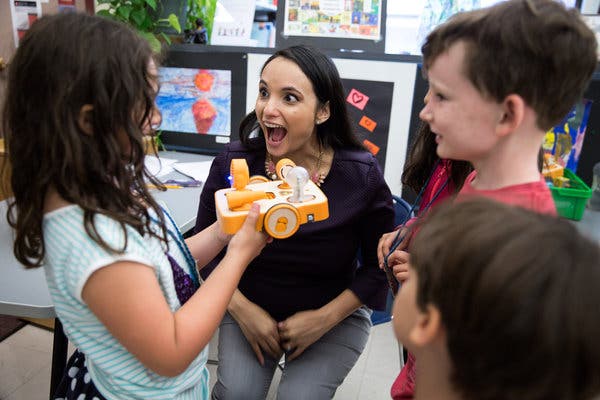
Beyond that, I also got the amazing opportunity to teach undergraduate level courses through the Tufts Experimental College during my time at EP including: Technology, Apps, and Games for Children and Human Development in the Digital Age.
Nick: What was the genesis of your new book?
Amanda: The inspiration for my book Breaking the STEM Stereotype comes from my own life battling stereotypes based on my socioeconomic status, gender, appearance, and more. When it came to STEM, I never felt confident in my abilities growing up. I was never exposed to any female engineers or scientists. And I was never encouraged to pursue any STEM hobbies or activities. I was told (and believed) things like my brother was better at math because he was a boy. As an adult, in my teaching practice in schools and summer camps, I saw girls today experiencing the same lack of confidence I experienced. I saw greater turnout of boys in all the after-school robotics clubs I taught. And I saw girls who shyly allowed the boys on their teams take over instead of confidently sharing their ideas.
My dissertation research confirmed for me that young children in early elementary school are developing gender stereotyped notions about STEM, technology, and their interests and abilities. It also confirmed that boys in early elementary school already have more interest in engineering than girls. This was disheartening. But I also learned that there are tools, curricula, teaching approaches, and role-modeling practices that can increase girls’ confidence and interest in technical STEM subjects. Many of which are simple shifts adults can make in the way they talk about and approach STEM. I wrote this book because I wanted to share my belief that the foundational early childhood years are very important when it comes to piquing girls’ interest in STEM. I wanted to get the word out to parents, teachers, babysitters, camp counselors, etc. on the impact of stereotypes and give them all the easy-to-implement strategies that can give girls an equal opportunity in STEM, beginning in early childhood.
Nick: When writing the book, what was the most surprising (positive or negative) piece of research that you uncovered regarding the gender disparity in STEM?
Amanda: I came across a lot of surprising things when writing this book. For example, there isn’t a drastic gender disparity in all aspects of STEM. Looking at the biosciences as an example, the proportion of women generally ranges between 51% and 58%, depending on the specific field and degree level. This means women now represent approximately half (or more) of bioscience professionals. In a way, this makes it all the more surprising (and troubling) that women’s representation in the technical STEM fields- the fields that drive innovation we rely on each day in our country- remains so low. According to the latest Bureau of Labor Statistics numbers, women still make up just 13% of engineers and 26% of computer scientists.
I knew that increasing the representation of women in the STEM workforce was important for a variety of reasons. But I was surprised to find research that demonstrated the importance of gender and racial diversity from a “bottom line” perspective. According to research by McKinsey & Company, which examined proprietary data sets for 366 public companies across a range of industries in the United States, Canada, Latin America, and the United Kingdom, gender and ethnic diversity is linked with increased profits for companies. So there you have it. Diversity is also just good business!
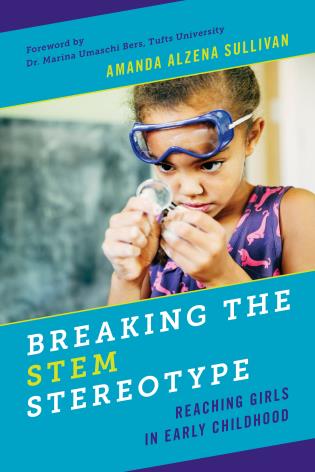
Nick: Do you have any advice, tips or words of wisdom to current E-P students?
Amanda: Stay positive and focused. College and grad school can sometimes feel like time has frozen and you will never get to the end of your program. Don’t forget to celebrate and reward yourself for all the little milestones along the way! (And don’t forget to celebrate all your friends’ milestones too!)
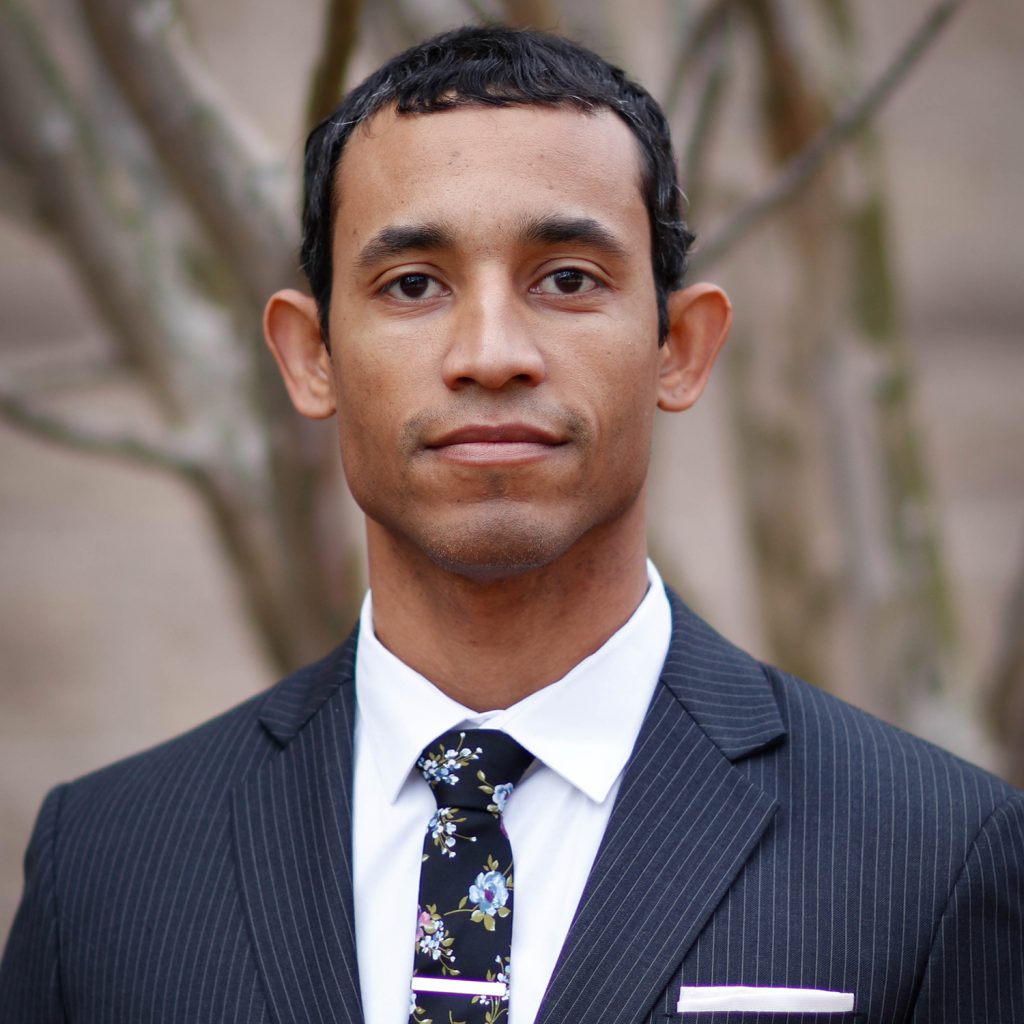

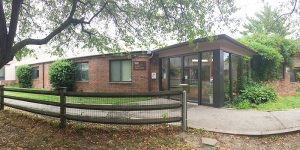
 ABOUT
ABOUT